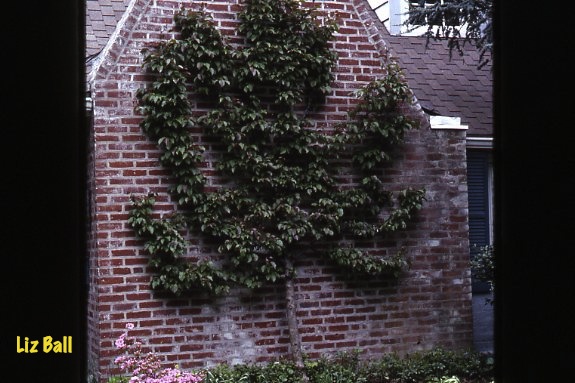 Most flowering crabapples show to best advantage when planted individually. Only in spacious yards do they look good planted in lines or small groups. Choose crabs that are known to hold on to their fruit until they shrivel or the birds eat them. If they are not persistent, then your yard will be littered with rotting fruits and hoards of yellowjackets. Look for a tree that has a form and mature height that is suitable. Some are medium sized and are useful near porches and patios, weeping types look best in informal landscapes. While some types are shrub sized, crabapple trees are too difficult to care for to use as hedges or windbreaks.
Most flowering crabapples show to best advantage when planted individually. Only in spacious yards do they look good planted in lines or small groups. Choose crabs that are known to hold on to their fruit until they shrivel or the birds eat them. If they are not persistent, then your yard will be littered with rotting fruits and hoards of yellowjackets. Look for a tree that has a form and mature height that is suitable. Some are medium sized and are useful near porches and patios, weeping types look best in informal landscapes. While some types are shrub sized, crabapple trees are too difficult to care for to use as hedges or windbreaks.
Many types of crabapples hold their fruit on their branches well into winter. Combined with their interesting bark and handsome structures, these trees are an attractive winter feature for the yard. When the birds come to eat the fruits it makes an even more wonderful winter landscape scene from the window.
Cutting/Forcing For Display Indoors: Crabapple blossoms and fruits are very good in floral arrangements. Budded branches can be forced to bloom indoors in March or later. The closer you cut them to their normal bloom time, the sooner they will bloom indoors.
Cut stems with small flower buds early in the morning on a mild day. Slit the woody ends and then soak them in a bucket of warm water for 3 to 4 hours so they can absorb as much moisture as possible. Strip off any leaves that will be under the water level in their container, fill it up with more water and place them in a cool, dimly lit room until the buds swell and begin to show color. This will be in about 2 to 3 weeks. Change the water periodically during this time. When you see pink in the buds, arrange the branches in a display vase with fresh water laced with floral conditioner or some citrus-based carbonated soda to help prolong flower bloom when they open. Bring them into a bright room where they can be appreciated and lift winter weary spirits. They will last about one week if they are not in the sun.
To display flowering branches in season, cut them just as the buds are showing color. Put them in water right away as described above. Display them alone or combined with other forced blooms such as or spring bulb flowers. For more information see Keeping Cut Flowers and Cut Flower Supplies
Crabapples are edible, simply being smaller versions of the regular apple. They are virtually entirely flavor and flesh, having very little juice. Because they are rich in pectin, they make wonderful jellies. To create crabapple “juice” simmer 2 pounds of crabapples in 6 cups of water until they become mushy. When it cools, mash it through a sieve to remove the skins, strain the slurry through a finer sieve. The resulting clear liquid is useful as pectin for other recipes or as a base for jelly when boiled with lots of sugar. Jelly is tart and acidic like quince jelly, more tang than regular apples. Most are very tart and are used primarily in jams and jellies.
Value To Songbirds
Flowering Crabapples produce fruits that attract a great variety of birds, including the white-throated sparrow. Crabapple trees with the smaller fruits tend to be more attractive to the songbirds.

